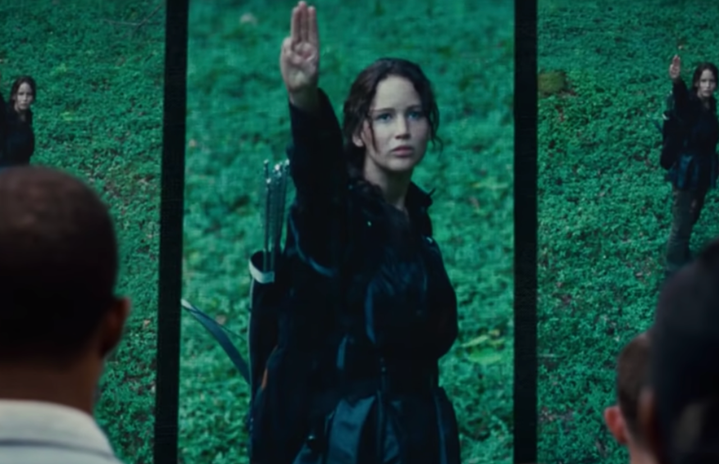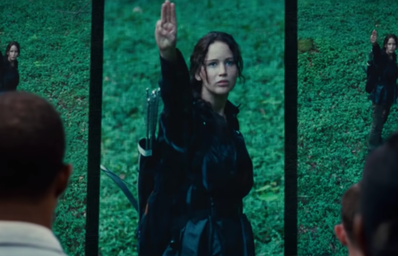Spoiler Warning: This article contains spoilers for The Ballad of Songbirds and Snakes, both the book and the movie.
Snow lands on top… and so does the newest installment of the Hunger Games movie series, The Ballad of Songbirds and Snakes. Released on Nov. 17, the story takes place 64 years prior to the events of the Hunger Games trilogy. It mainly revolves around the formative events that make President Snow the villain we all know and hate today, as well as provides insight into the origins of the Hunger Games themselves. But of course, like its predecessors, this movie is an adaption of Suzanne Collins’ book by the same name. While the original franchise received high praise for its book-to-movie accuracy, does this new film deserve the same? Here are the top five main differences between the book and the movie.
- The Games Overall Play Out Quite Differently
-
First and foremost, one of the biggest differences I noticed between the book and the movie was how the games played out. Lucy Gray still wins, but the way the Games get to this point differs. For starters, in the movie, the first scene of the 10th Hunger Games results in a bloodbath. However, in the book, there is no such scene; many tributes grab their weapons and run (or just run away). In the book, the first notable kill is when Lamina strikes down Marcus out of mercy, whereas in the movie, it isn’t as big of a deal.
Another significant difference was Coral. She was still a tribute in the book, but her role was not as dominant as in the movie. In the book, the only two tributes we focus on besides Lucy Gray are Reaper, the deadliest tribute, and Jessup, Lucy Gray’s District 12 companion. Coral is mainly a part of the background and isn’t the deadly leader the movie portrays her as.
Overall, most of what makes the Games so different in the movie is that most of what goes down in the book’s Games remains a mystery. In the book, cameras are absent in the tunnels, making the only true action we see the action that takes place in the main arena.
- Lucy Gray Doesn’t Win Because She Survives the Snakes
-
How Lucy Gray wins the games also differs between the book and the movie. The pinnacle snake scene is still present, but in the book, by the end of it, Lucy Gray isn’t the only tribute left. There are actually three other tributes as well. It eventually boils down to just her and Reaper. Noticing that he hasn’t had much food or water, she is able to kill him by running him tired. She purposefully dashes across the arena and messes up his makeshift cemetery of tributes, which angers him into rushing after her and fixing the display. Eventually, he dies from heat exhaustion, and Lucy Gray becomes the victor.
- The Zoo Conditions Were Way worse
-
By any means, being stuck in a zoo for people to watch you starve before you are put in an arena to fight to the death is not a fun time. The book definitely paints the zoo as a horribly dehumanizing place. Although Lucy Gray briefly mentions that the tributes are not being fed in the film, we are told much more in the book about how frail the tributes are.
Not only is the Capitol withholding food and water from the tributes, but also proper medical care. After the bombing, two tributes died because of the Capitol’s refusal to admit them to a hospital. Combined with the bombing and the horrible living conditions, in the book, only 15 tributes actually made it to the start of the Games. Even then, their poor health did not fare well in the arena. It’s largely implied that these initial poor conditions are actually something that contributed to the lavish treatment the later victors receive, given that the better their health is, the longer they’ll live and the more entertaining the Games will be.
- Snow is Considerably More Evil
-
While watching the movie, it can be challenging at times to remember that Coriolanus grows to become the villainous President Snow. The movie doesn’t necessarily help you understand this much, either. In the book, we are able to read Coriolanus’ inner dialogue and understand the motivations behind his actions. These parts are essential to seeing Coriolanus’ descent into evil. Whenever Coriolanus does anything remotely nice in the book, we know that it’s not out of the kindness of his heart. Rather, it’s motivated by his desire to elevate his status and eliminate opponents.
His twisted thoughts are mostly exemplified by his feelings toward Lucy Gray. While Coriolanus and Lucy Gray’s relationship may seem like a love story, the way Coriolanus feels for Lucy Gray is a bit twisted. In the book, we learn that Coriolanus views Lucy Gray as something he owns. In certain parts of the book, he wishes she were in a cage so he would always know where she was. The movie paints the duo as much more romantic, whereas, in the book, we know his true intentions and view him as a bad person earlier on.
- Clemensia Dovecote Comes Back
-
In case you don’t remember, Clemensia is one of Coriolanus’ classmates and is the one who claimed she worked on the Hunger Games proposal alongside him. In both the book and movie, Clemensia is caught in her lie, bitten by the rainbow snakes, and carried off.
Her role ends here in the film, but in the book, she makes many more appearances. For example, when Coriolanus is in the hospital after the arena bombing, Clemensia finds him. She’s described as having peeling skin, yellowed eyes, and scales resembling rainbow snakes spearing across her body. She claims no one has come to visit her, not even her family, before the hospital staff carries her off. I believe this scene gives important insight into not only the cruelty of Dr. Gaul but also the Capitol as a whole. It was a scene I was quite looking forward to seeing on the big screen, and I was disappointed when it wasn’t included.
Overall, the movie is quite accurate to the book. There are, of course, many more differences, but most of what was cut scene-wise made sense in terms of telling the overall story. The book is 528 pages, making it 220 words longer than the third book in the trilogy, which was split into two parts for the film series. Would The Ballad of Songbirds and Snakes have benefited from being split in two? I don’t think so. But I do think adding more of these aforementioned parts to its 158-minute runtime would’ve helped the movie’s impact. If you’re a fan of the movie, I largely encourage you to read the book as well. You may find yourself liking it better than the movie.
Want to see more HCFSU? Be sure to like us on Facebook and follow us on Instagram, Twitter, TikTok, and Pinterest!


